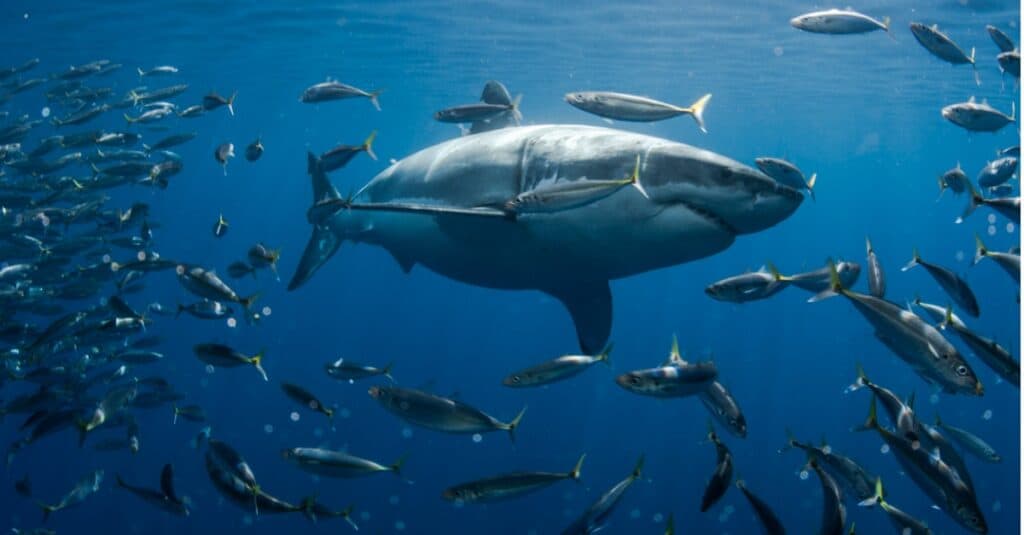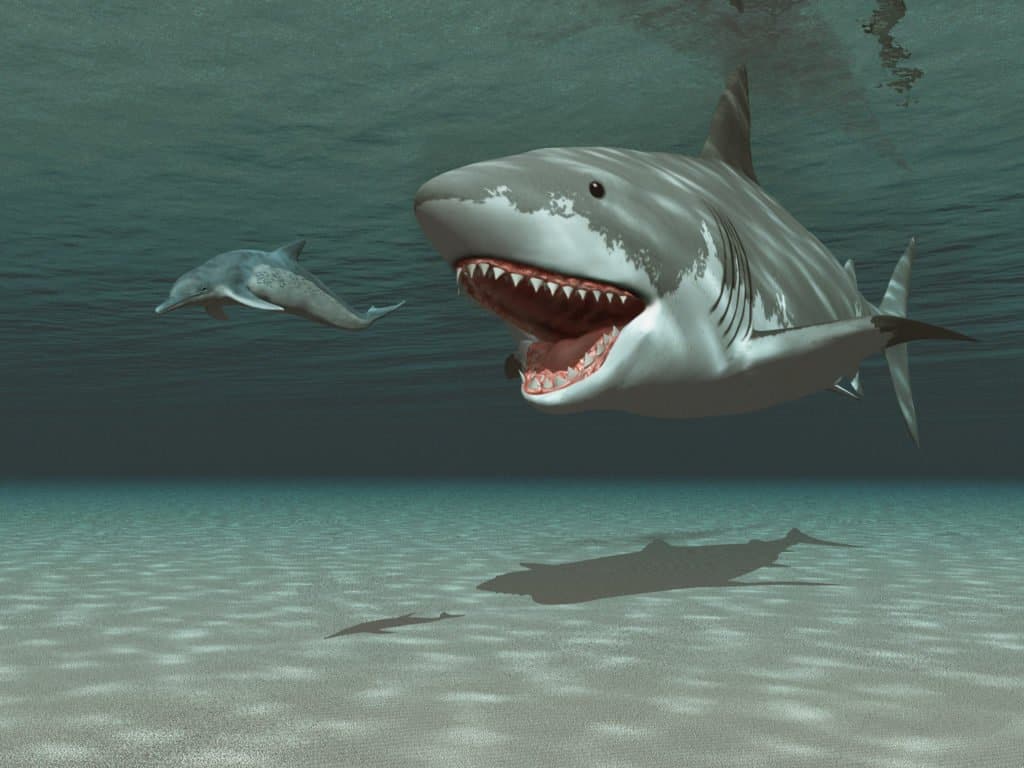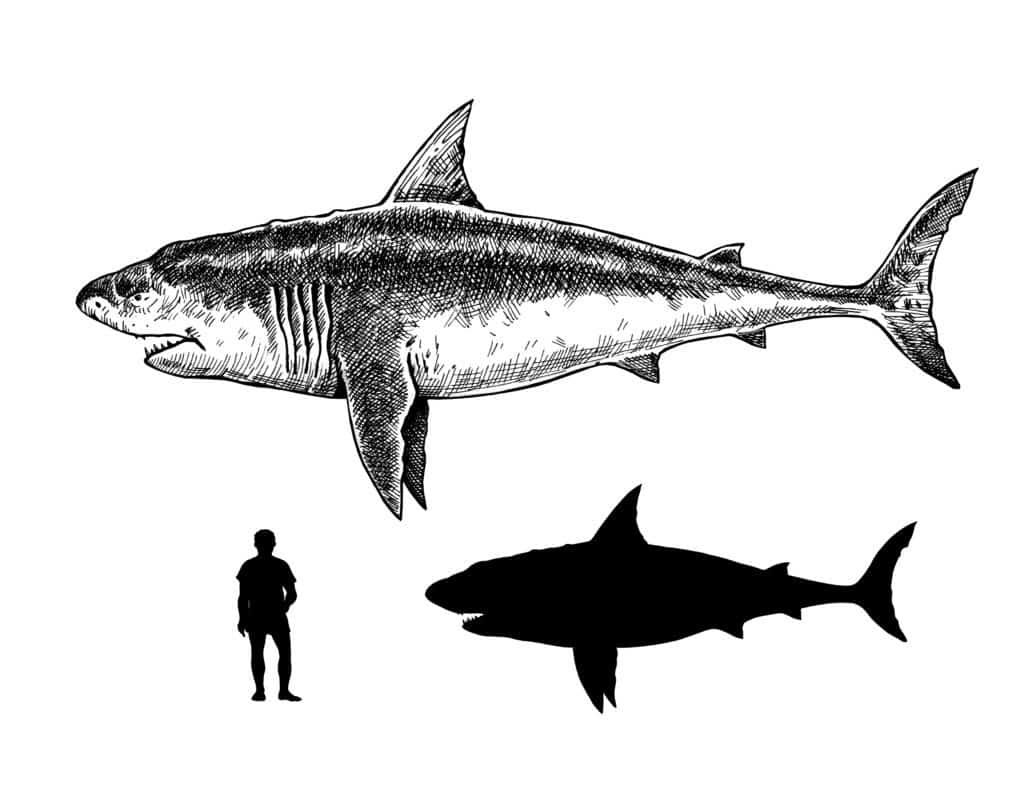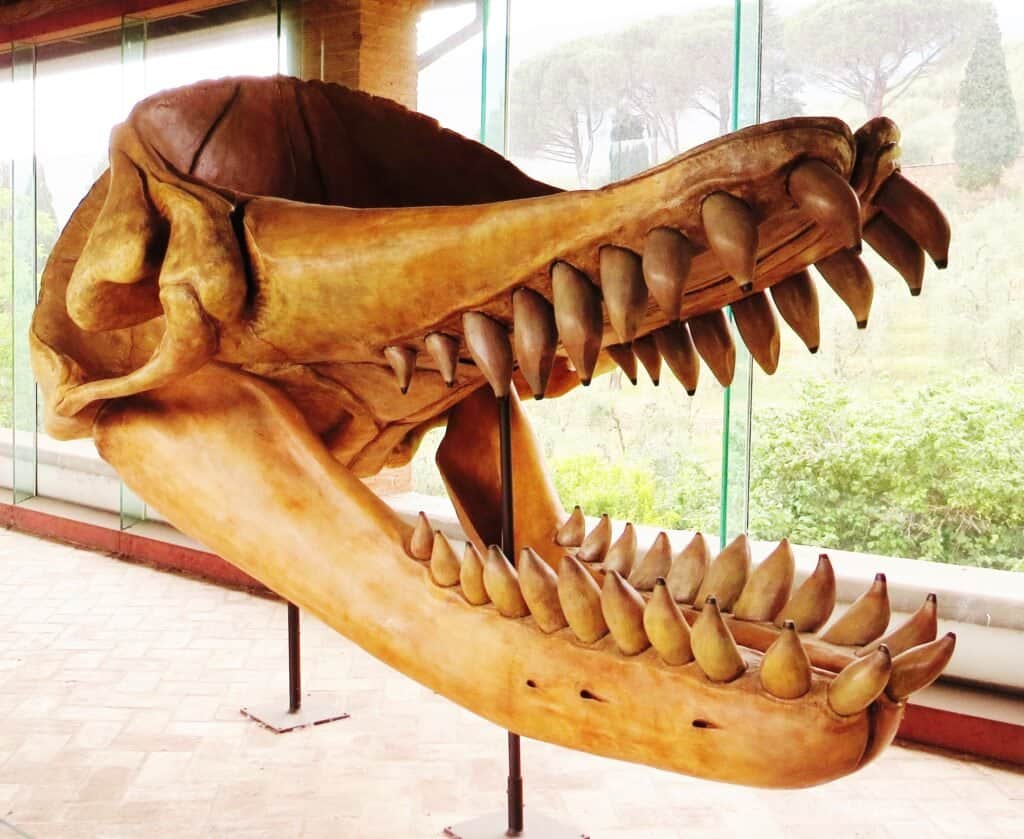Carcharodon carcharias. Carcharodon megalodon. These are the scientific names of some of the most incredible predators to ever swim in our oceans. Today, the great white shark (C. carcharias) reigns supreme in every ocean on Earth. But, 15 million years ago, the great white would have been nothing but a snack for the massive megalodon (C. megalodon). Today’s great white sharks may be the stuff of nightmares for many, but they’re small fries compared to the largest prehistoric sharks to ever stalk Earth’s oceans.
Here, we’ll learn about just how big great white sharks really are and how scientists can use their teeth to determine their size. Then, we’ll take that information and apply it to the world’s most famous extinct shark, the megalodon. But, size estimates for megalodon aren’t quite as straightforward as they are with the great white. Here, we’ll learn why there is so much disagreement in the scientific community about the true size of the megalodon. Then, we’ll review a few of the most commonly accepted estimates for this massive prehistoric shark.
How Big are Great Whites?

Great whites are named for the distinctive white color of their undersides.
©iStock.com/atese
Currently listed as Vulnerable, great white sharks take about 30 years to reach reproductive maturity. Females grow larger than males, with both sexes living an estimated 70 years or more. Male great whites grow up to 13 feet long, while females grow up to 16 feet long. The lightest adult great whites weigh about 930 pounds, while the heaviest adults weigh up to 7,330 pounds.
Megalodon: The Biggest Shark that Ever Lived

The largest megalodon teeth measure up to 7 inches long.
©iStock.com/Mark Kostich
The megalodon is the largest shark that has ever lived. The name “megalodon” literally means ‘big tooth.’ Like the great white, the megalodon was an apex predator and would have hunted using its vast size, speed, and deadly teeth. Studies show that these incredible predators were many times the size of the modern-day great white. But, just how much bigger was the megalodon?
What did the Megalodon Eat?

Scientists believe that mature megalodon would have eaten a combination of cetaceans, fish, sea turtles, and other sharks.
©Esteban De Armas/Shutterstock.com
The megalodon was capable of attacking and eating prey even larger than the great white sharks of today. Juvenile megalodons would have eaten fish, other sharks, and small cetaceans. Adults would have had their pick of prey, including bowhead whales, sperm whales, giant sea turtles, dolphins, baleen whales, and now extinct shark-toothed dolphins.
Scientists believe that the megalodon was an active hunter rather than a scavenger of the world’s oceans. While the scientific community knows what kinds of animals the megalodon would have eaten, there is still no consensus on its exact size. Let’s take a closer look at some of the size estimates for the largest prehistoric shark that ever lived.
Just How Big was the Megalodon?
Shark skeletons, including the megalodon’s, are made up almost entirely of cartilage. When they die, this cartilage quickly decomposes, leaving only the hard, enamel-coated teeth behind. Because of this paucity of remains, judging the megalodon’s size has always been a little difficult for scientists. For years, the overall size of megalodons was estimated by the height of their teeth. This method led scientists to determine that the megalodon would have been 50-60 feet long.
But, in 2021, a graduate student teaching a group of high school students stumbled on a new way to compute the megalodon’s size. By measuring the width of the teeth rather than the height, they determined that the megalodon’s maximum size actually would have been 65 feet.
Yet another study, published in 2008, uses body mass estimates for megalodons that dwarf the body mass of today’s great whites. In the study, the minimum estimated body mass for the megalodon is 105,000 pounds. The maximum possible body size for these prehistoric sharks is a whopping 227,000 pounds. That would make the megalodon 50x bigger than the largest great whites currently swimming in our oceans!
Why is it so Difficult to Determine the Megalodon’s Size?

Like all extinct creatures, we only have fossil remains of the mighty megalodon, which makes it difficult to reconstruct it accurately.
©Sammy33/Shutterstock.com
The megalodon went extinct sometime between 2-4 million years ago. Scientists have to use the few remaining traces—like teeth and fossilized damage to whale bones—to reconstruct the massive shark. Because no one has ever seen a megalodon, no one knows exactly how their teeth fit into their jaws. Because teeth, and their position in the jaw, are integral to determining a shark’s size, this lack of information means that new size estimates are being made all the time.
Why Did the Megalodon go Extinct?
The megalodon may have been the king of the seas for millions of years, but not even the great prehistoric shark could withstand oceanographic changes. Around 5 million years ago, glaciers at the north and south pole expanded, which led to a global drop in sea levels. At the same time, the world’s oceans cooled, and many species of whale and other large vertebrates (like the megalodon) went extinct.
Scientists believe that the megalodon relied on warm, shallow, coastal waters as nurseries for their young. When the sea levels dropped, many of these areas disappeared. And with the cooling oceans came a reduction in prey. Exact estimates vary, but it’s safe to say that our oceans have been megalodon free for more than two million years.
What Animals Competed with Megalodon?

The megalodon might have been the scariest shark in Earth’s ancient oceans, but it wasn’t the only hunter out there.
©Ghedoghedo / CC BY-SA 4.0 – License
There is no question; the megalodon was the apex predator of its oceans and could eat just about anything it laid its eyes on. But, also swimming in the Earth’s oceans were massive toothed whales, like Livyatan. Livyatan was essentially a giant killer whale. Scientists estimate its total length at 44-57 feet. And, like megalodon, Livyatan ate whales and other large ocean creatures. These two species likely competed for food in areas where their territories overlapped and may have even eaten one another from time to time.
The photo featured at the top of this post is © Herschel Hoffmeyer/Shutterstock.com
Thank you for reading! Have some feedback for us? Contact the AZ Animals editorial team.







